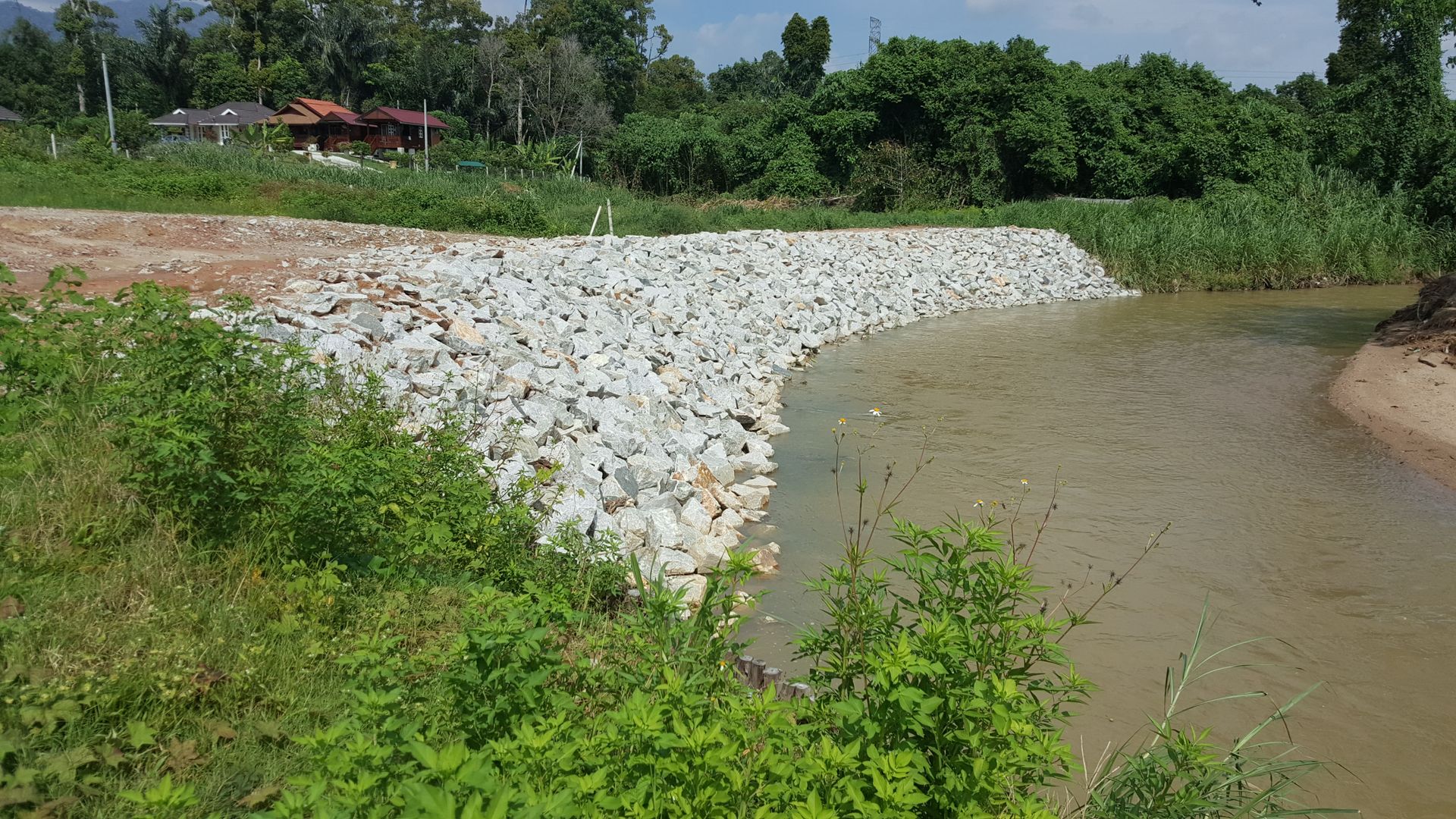Erosion control is an essential part of stormwater management, especially for temporary or permanent structures adjacent to rivers, streams, and other water sources.
Not only do erosion BMPs help protect these water sources from sediment and pollution that may empty into these areas, but they also protect nearby structures from flooding and elevated water levels.
In our view, the best erosion control BMPs are ones that take advantage of the natural environment without requiring costly materials or more excavation done to the earth.
Common examples include restoring natural vegetation via hydroseeding and mulching, as well as permanent structures such as ripraps.
Ripraps are not only inexpensive when compared to other materials, but they’re durable and long-lasting. This guide will explore the various uses and benefits of ripraps when it comes to erosion control.
What Are Ripraps?
Ripraps, also known as rock armoring, consist of large, angular stones and rocks strategically placed along shorelines and banks to protect the soil underneath from erosion.
Since most banks and shorelines near streams, rivers, and lakes are naturally sloped to allow water to drain, these areas can be highly susceptible to erosion and lead to sedimentation that mixes with these water sources.
Riprap barriers serve a dual purpose, protecting the soil underneath from erosion while allowing heavy materials, such as sediment, to settle before being washed away down shorelines.
Riprap stones and rocks can range in size from a few inches to two feet in diameter and are typically placed on top of geotextile blankets to prevent erosion from undercutting the rock formation.
Common Uses of Ripraps
Ripraps are typically employed around shorelines and water banks to protect slopes from erosion and water sources from pollution. However, there are several additional uses for riprap barriers, including:
- Shoreline Protection: Coastlines around oceans and lakes are highly susceptible to erosion from oncoming waves and rainwater. Ripraps prevent wave action from eroding beaches and destabilizing nearby properties, such as piers or homes.
- Riverbank Stabilization: Ripraps safeguard riverbanks from strong currents, preserving natural habitats and preventing soil loss that can lead to increased turbidity and disturb aquatic life.
- Road and Bridge Protection: In areas where infrastructure is built near water bodies, ripraps protect the foundations of roads and bridges from water-induced erosion.
- Slope Stabilization: Ripraps may be employed on steep slopes with no nearby water to prevent landslides and keep soil in place during heavy rainfall or snowmelt.
Benefits of Ripraps in Erosion Control
Depending on their application, ripraps may offer superior protection for slopes and banks over other forms of erosion control, including silt fencing, geotextile fabrics, and retaining walls.
From an overall project management perspective, ripraps offer several benefits that make them reliable.
- Durability and Longevity: Ripraps are made from natural stones, making them highly resistant to weathering and environmental changes. When installed with a geotextile fabric underneath, they can last as long as they can withstand undercutting and erosion.
- Energy Absorption: By absorbing the energy of flowing water or strong winds, ripraps prevent soil displacement and structural damage to nearby infrastructure like roads, bridges, and buildings.
- Environmental Protection: Ripraps help preserve ecosystems by stabilizing shorelines and riverbanks, reducing sediment runoff, and maintaining water quality in nearby water bodies.
- Customizable Solutions: Riprap installations can be tailored to fit a variety of landscapes and conditions, from gentle slopes to steep embankments.
The Cost of Riprap Installation
One concern that project managers might have about ripraps is the cost of materials and installation. While it can be a large investment upfront, the return on investment, such as reducing the effects of erosion and flooding, often outweighs the costs.
Generally, the cost of riprap installation varies based on factors like the size of the area, the type of stones used, and labor requirements.
The Installation Process
An environmental management company will be able to install, maintain, or inspect your riprap to ensure it meets proper compliance.
Overall, the effectiveness of ripraps depends on proper installation. Therefore, understanding the installation process is essential to ensuring that your riprap works as intended. Here are the key steps involved:
- Site Assessment: Engineers will evaluate the area to determine erosion risks, water flow patterns, and soil stability to design an appropriate riprap solution.
- Grading and Preparation: The slope or bank will be graded to the desired angle, and a geotextile fabric will then be laid atop the soil to prevent undercutting.
- Stone Placement. Large stones are strategically arranged to create a stable, interlocking barrier, like a retaining wall. Smaller stones may be added to fill gaps and enhance stability.
- Inspection and Maintenance: After installation, the riprap needs to be inspected regularly to ensure it remains secure and effective. Repairs may be needed after extreme weather events.
Ripraps are an essential form of erosion control for construction projects and municipalities. For help installing, inspecting, and maintaining your riprap barrier, contact the experts at Valor Environmental.
FAQs
What types of rocks are used for ripraps?
Ripraps typically use angular stones like granite, limestone, or basalt based on their resistance to weathering and ability to interlock securely.
How long do ripraps last?
When installed correctly, ripraps can last for decades with minimal maintenance, making them a cost-effective erosion control solution.
Can vegetation grow on ripraps?
Yes, vegetation can grow between riprap stones, which can enhance their stability and provide additional environmental benefits.

